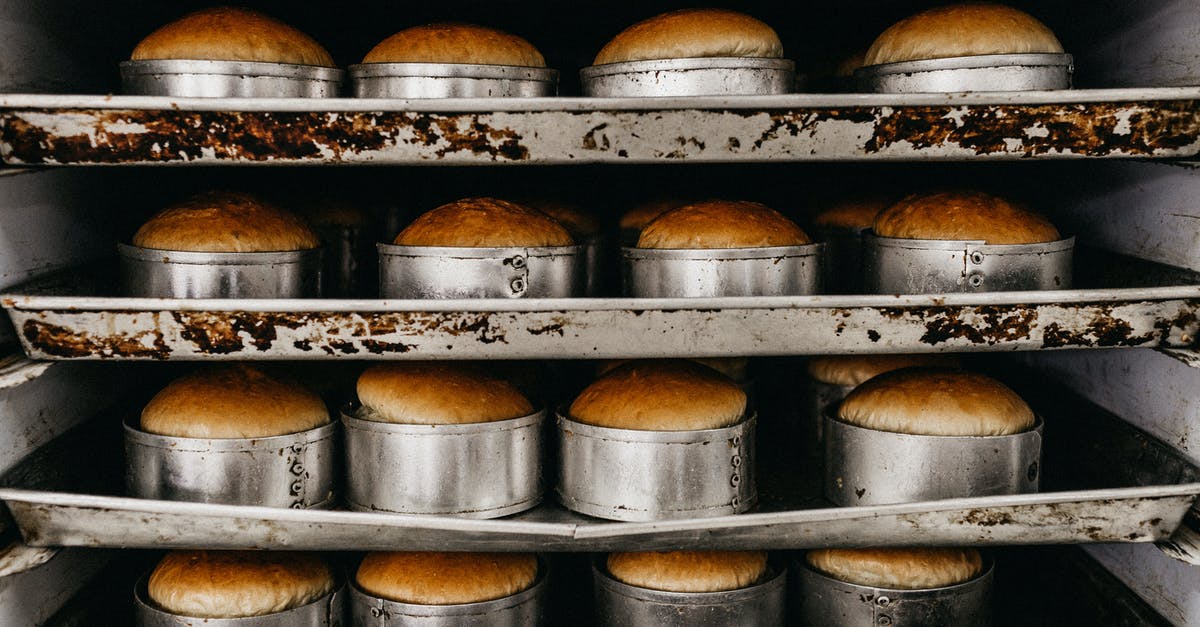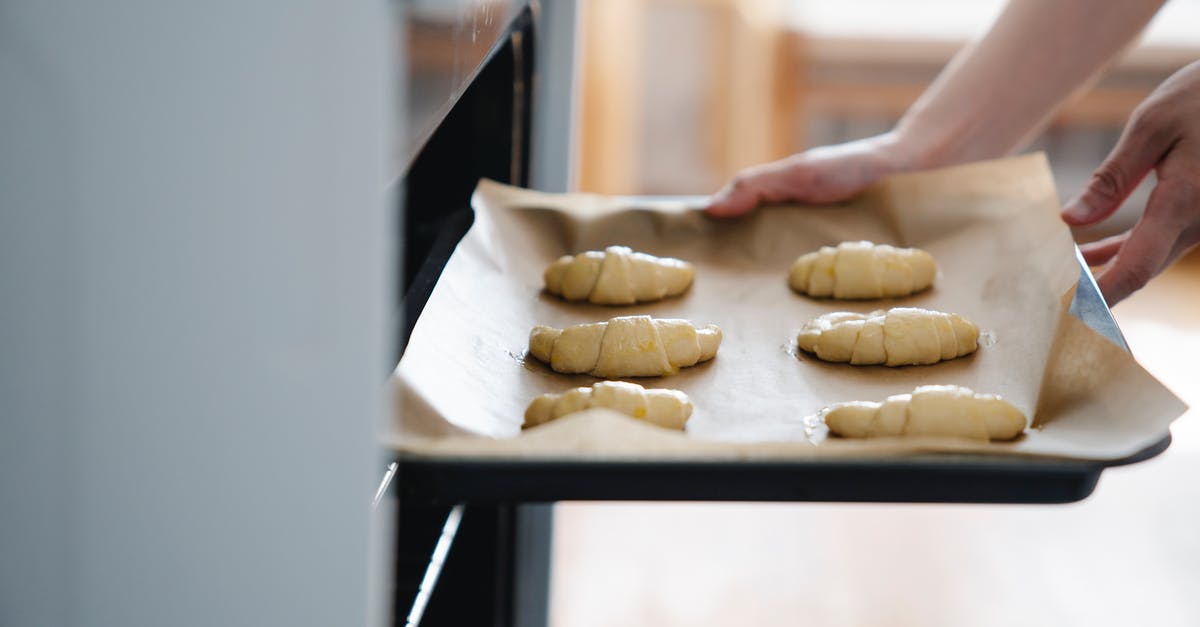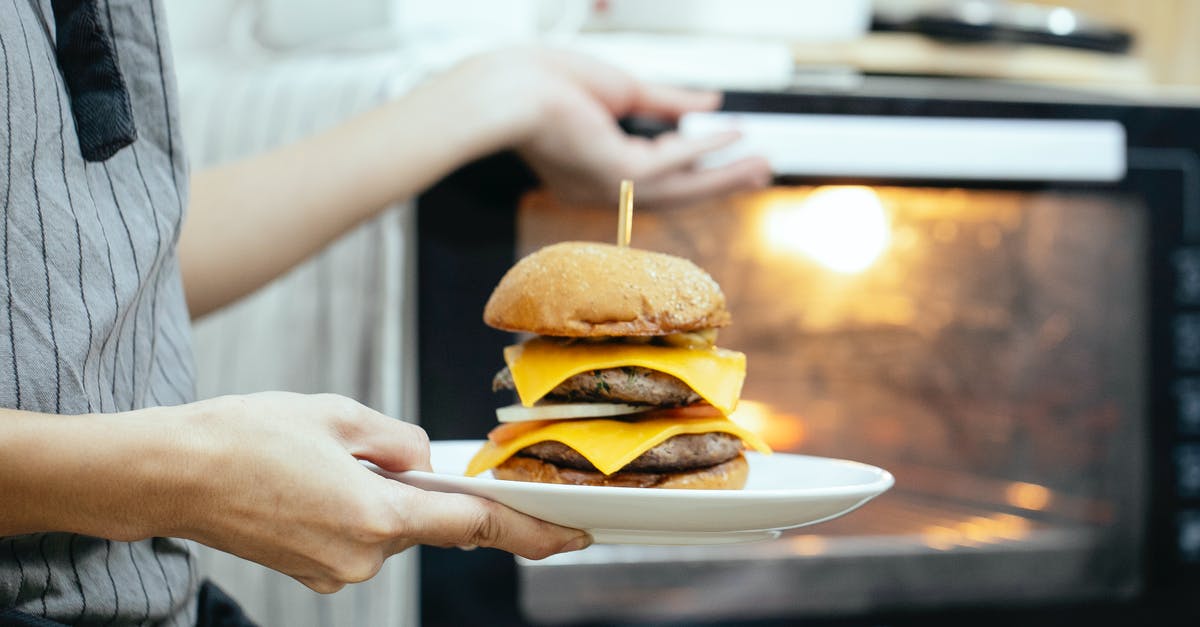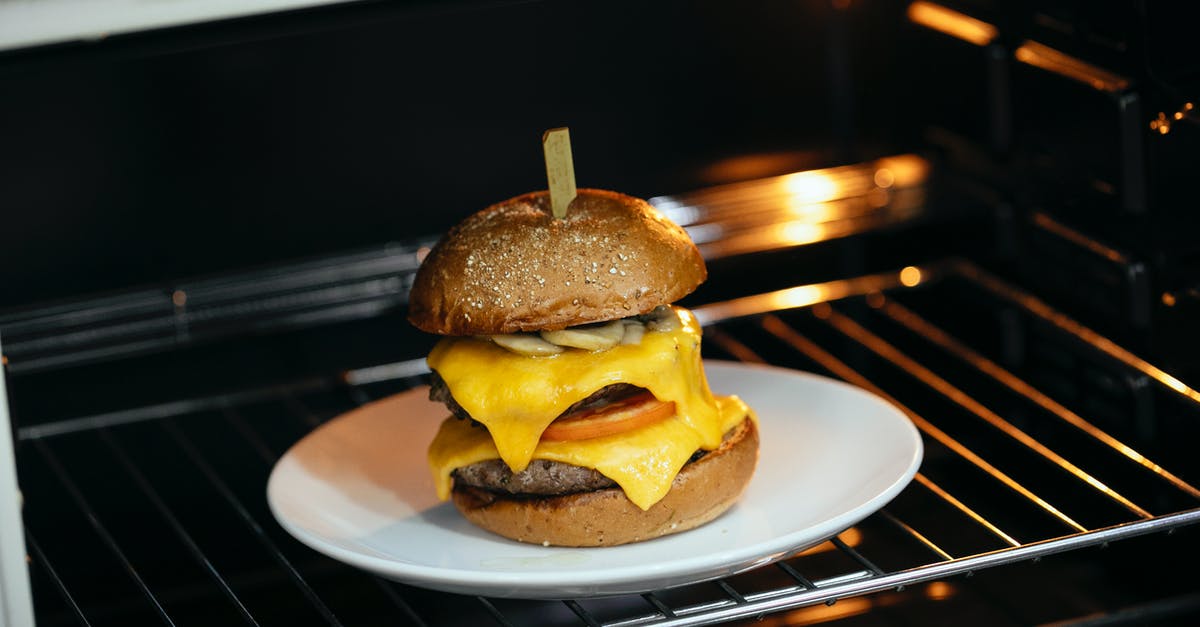Dutch oven bread - bottom always burns

When I bake bread in my dutch oven, to get the bread crust a darker brown and where it should be, the bottom will burn. I've used several recipes and different ovens with the same problem outcome. The dutch oven is as high as I can put it in the oven, which helps but it's still burned slightly.
The recipes always call for a pre-heat of 475F before the bread goes in, 25-30 top on 15-20 top off. I'm trying to adjust the temperature now, but I don't see how this isn't a more common problem. Any suggestions for this?
Best Answer
I've had the same issue at home, with a very hard or burnt crust bottom:
I've made the following adjustments through experimentation. This will help greatly, but might not fix the problem entirely. I routinely preheat my empty dutch oven in the oven set to 500F with the lid on. When baking, I take it down a notch to 475F. I do one or more of the following steps before I place the loaf in the hot dutch oven:
Convection: I'll mention this first, because it makes the largest difference. If your oven has the convection baking feature (mine does not), enable it. It moves the heat around evenly, but it also helps the thermostat do its job properly and keep the set temperature.
Add a layer of semolina/cornmeal/flour: Add a generous layer of durum wheat semolina at the bottom of the dutch oven. Don't worry about putting too much on. You can brush off the excess after baking. Whatever doesn't stick to your bread will just fall out of the dutch oven (no cleaning needed). I've also successfully used corn meal as a substitute, but corn meal has a tendency to caramelize a bit more if you leave it on the surface of the bread, and it also has a sweeter taste. The semolina will brown, but it will form a small heat barrier between the dutch oven and the loaf. I use parchment paper to transfer the loaf into the dutch oven, and so my semolina ends up under the paper. You can try semolina without parchment paper, but it will add texture to the bottom of your baked loaf (which can be quite good!)
You can also combine this with a layer of flour on the bread which will also protect the bottom somewhat, but not as much as semolina or cornmeal. Semolina has larger grain size and I find it provides additional "spacing". Also consider modifying the recipe, and roll your loaf in sesame seed when you add it to your proofing basket. I find this helps too, and you can scrape the dark ones off easily after baking. It also looks (and tastes) good.
Add a layer of chaff/bran: If you mill your own flour, you can use a layer of chaff/bran (the stuff you sift out) at the bottom of the dutch oven. It's a good insulator. Brush it off when your loaf is done. Got this tip from the perfect loaf.
Add parchment paper: If you use parchment paper to transfer the loaf into the dutch oven, you can use a second layer of parchment paper. Make sure you trim whatever protrudes from the rim of the dutch oven -- you want a good seal on the lid to trap steam in.
Move to a higher rack / use baking sheet(s): Move the dutch oven to the highest position that your oven can accommodate (farthest away from the element), and place the whole dutch oven on a baking sheet. You can insert an additional baking sheet on a rack below. I suspect using a baking stone (or baking steel) under the dutch oven would protect from direct heat even more. A stone or steel should dampen changes in temperature when the heating element starts/stops. Covering an area with foil would also work (I'm used to cookie sheets because I would pour water on them to steam the oven -- I find they're less trouble than foil).
Switch to cast iron: If you are using a ceramic/earthware dutch oven, try switching to a cast-iron dutch oven (enameled or not). The heat retention and conductivity of metal is much higher and more heat is radiated by the sides of the dutch oven. This may seem controversial, given that so many bread cocottes are made of clay/ceramic -- but my personal experiences with my (cheap/inexpensive) clay pot is that my sourdough breads were carbonized on the bottom.
The brand of cast iron doesn't matter so much in my opinion. I've used several brands of cast iron dutch ovens (Lodge, Staub, Lagostina), all with similar results. What I've found matters most is not so much the brand, but rather how well the lid fits -- you want to trap the steam as much as possible (it keeps the loaf cooler). If your lid doesn't make good contact around the rim (e.g. if there's a wobble), you can try making a "gasket" with a silicone baking mat sandwiched between the lid and the pot.
Use finer marks on analog knobs / monitor temperature: The temperature dial on my oven is analog and doesn't have much tactile feedback (no notches nor clicking), and there's probably a 10-15F average error when choosing a setting because of the size of the paint notches on the temperature dial. This is slightly OCD, but I line up the edges of the paint lines rather than the centers, to get a reproducible setting between bakings. An oven thermometer might be a good investment if your kitchen oven's like mine, and you need to fine tune the rheostat to recalibrate dial markings to "real" temperatures.
Adjust baking temperature / baking time: Lastly, this is somewhat obvious, (but sometimes non-trivial depending on the recipe,) but consider reducing your baking temperature to account for any make/model discrepancies for your oven. Get an oven thermometer to monitor the real oven temperature (or even inside the dutch oven if you have a probe). Adjust the recipe time accordingly.
Live with it: This is somewhat of a boring solution, but find a way to appreciate the darker/thicker crust, or scrape the burnt bits with a knife. Different unique flavors get brought out in the crust. If you find it difficult to cut through thick bottom crust with a serrated bread knife (which is personally what I dislike the most about thick crust), try slicing with a long and sharp chef knife instead, and rock back and forth on it -- i find it easier.
Something else I haven't tried yet, but could work well, is to use a thick silicone baking mat at the bottom of the dutch oven instead of parchment paper. But it might need to be cut to shape (and hence, sacrificed for that purpose) to avoid deforming the loaf as it expands -- they are far more rigid than parchment paper and don`t hug the sides of the oven as well, esp when the mat is square and the oven is round/oval. If your oven is of the "cloche" kind, then of course the shape/size of the mat doesn't matter as much if you can close the lid down hermetically over the (protruding) mat.
Pictures about "Dutch oven bread - bottom always burns"



Quick Answer about "Dutch oven bread - bottom always burns"
Put a baking sheet or cookie tray on the shelf underneath your Dutch oven. It's that easy! A pizza stone will also work in the same way. Not only will it stop your sourdough base from burning, it will also prevent it from developing such a thick crust on the bottom.Sourdough Success!! I have a solution for not burning the bottom too, Watch and Learn!
More answers regarding dutch oven bread - bottom always burns
Answer 2
My approach for burnt bottoms in various ovens around the world involves aluminum foil to deflect some of the heat on the bottom. You could either set a sheet on the rack, shiny side down, or if that proves inadequate (or fragile) hang a sheet under the rack, crimped onto two of the wires - in either case, set your dutch oven on top of the area protected by foil.
Given the lack of oven thermometer I'd also be inclined to suggest turning down the heat (and extending the time, if needed), but try the foil first, since most practitioners of the sort of baking you are trying seem to like it hot.
Answer 3
Top on first doesn't make that much sense, you generally get a better rise if you start with bottom heat and only later add top. Doing it the opposite way - starting with bottom and top on, then switching to only top - is what you need, especially if your bottom is burning. I can't tell you when it is best to make the switch, you have to try it with your own oven and find out what works best. The middle of the baking process might be a good starting point.
Sources: Stack Exchange - This article follows the attribution requirements of Stack Exchange and is licensed under CC BY-SA 3.0.
Images: Jonathan Borba, Felicity Tai, Katerina Holmes, Katerina Holmes
